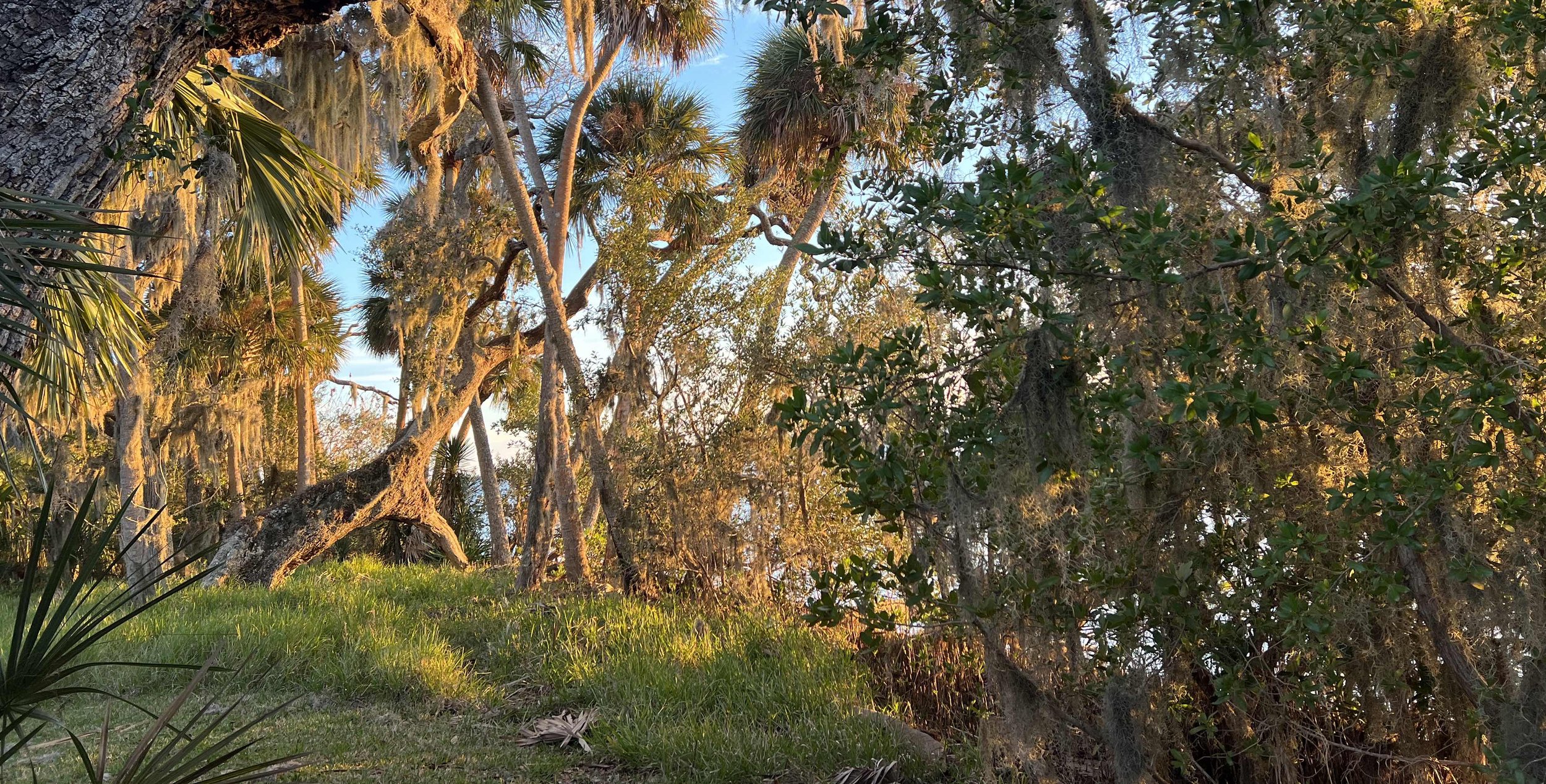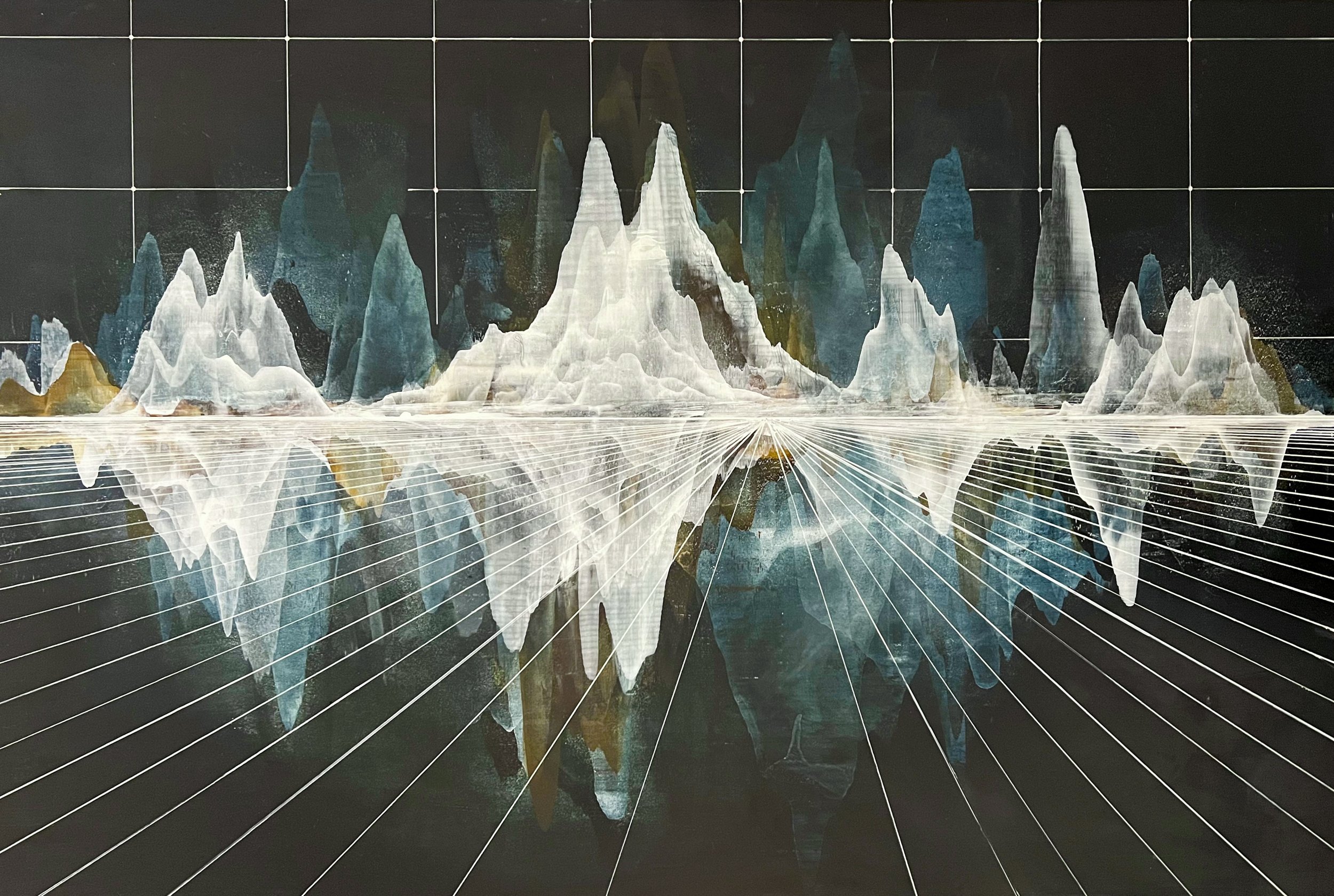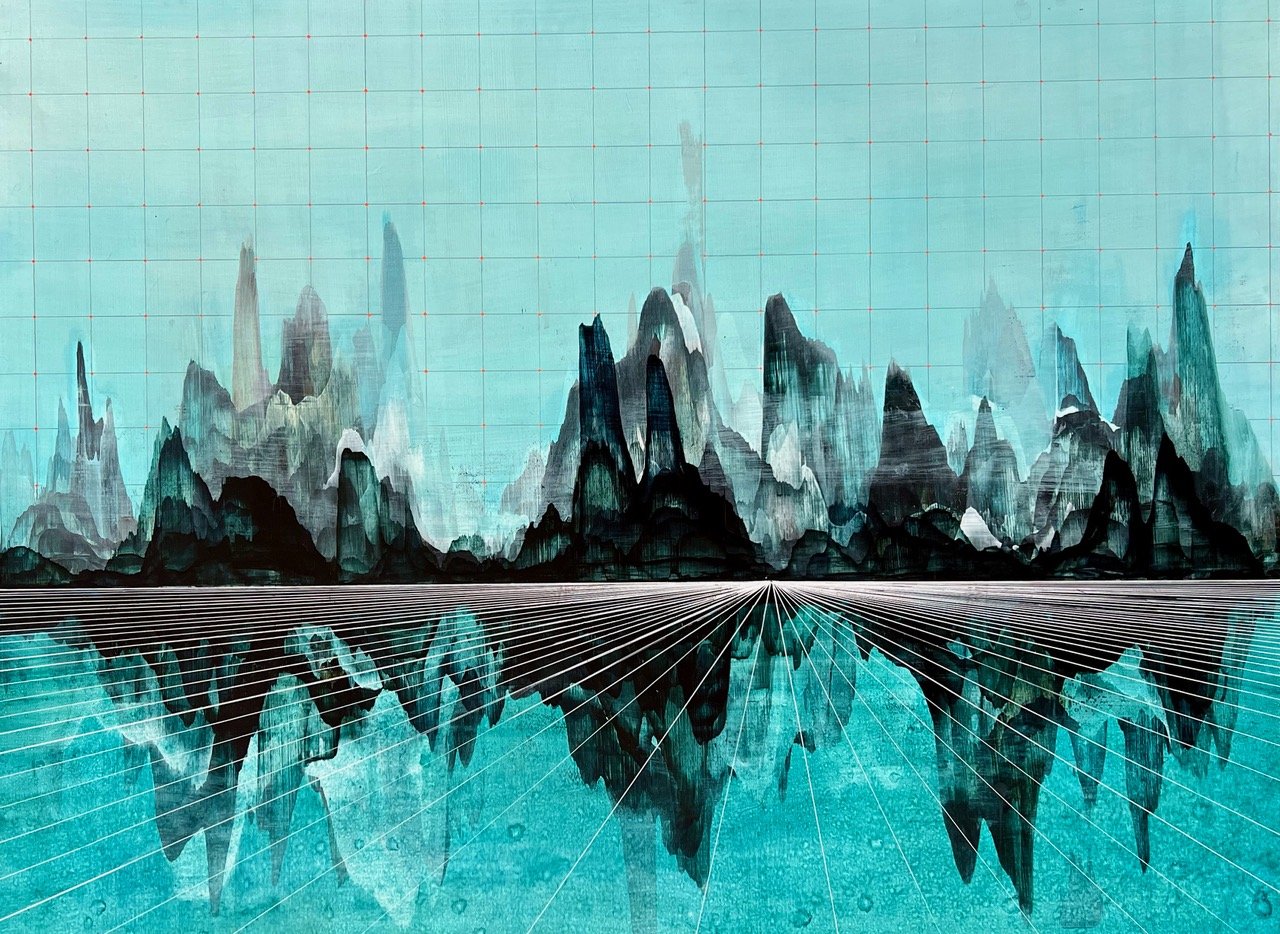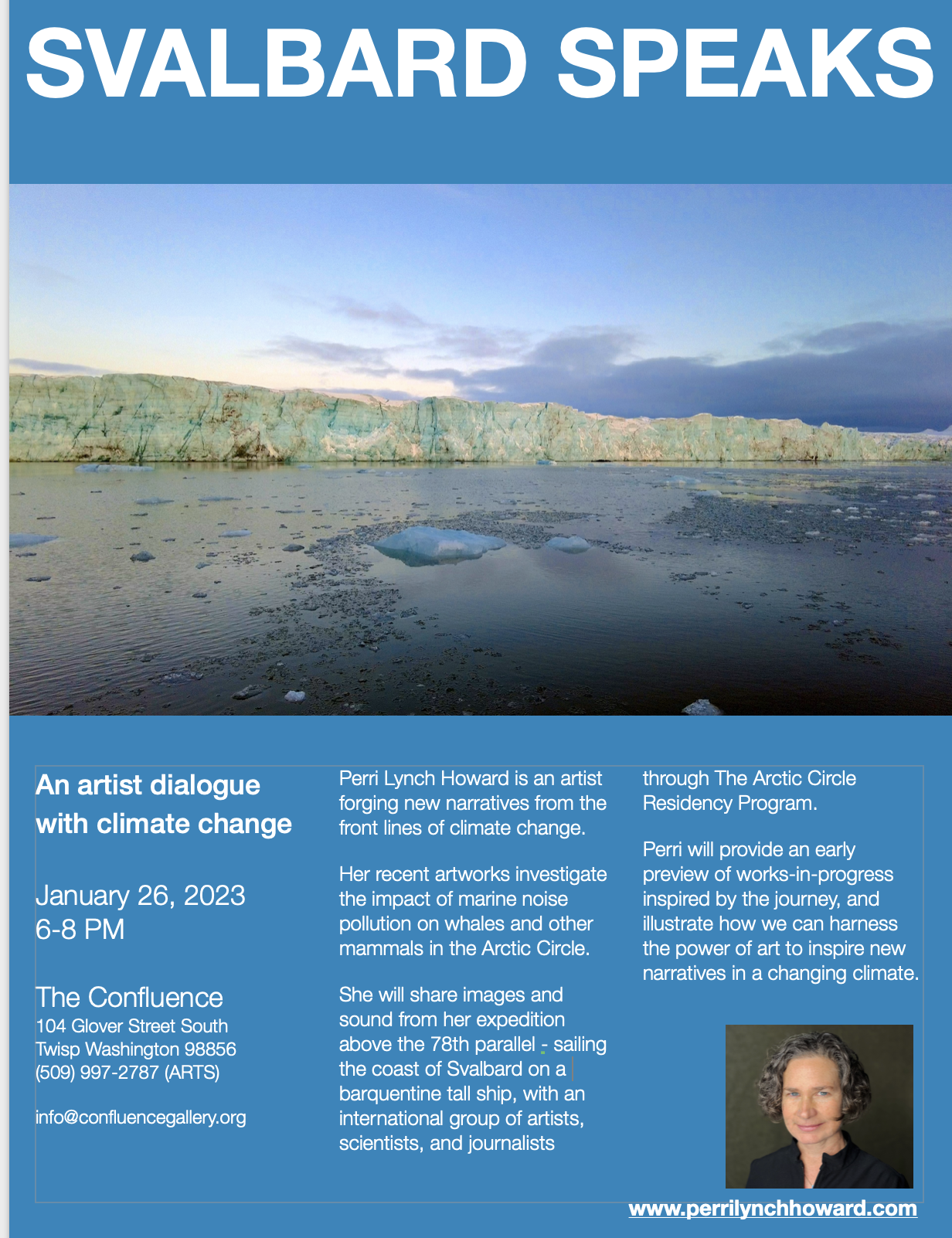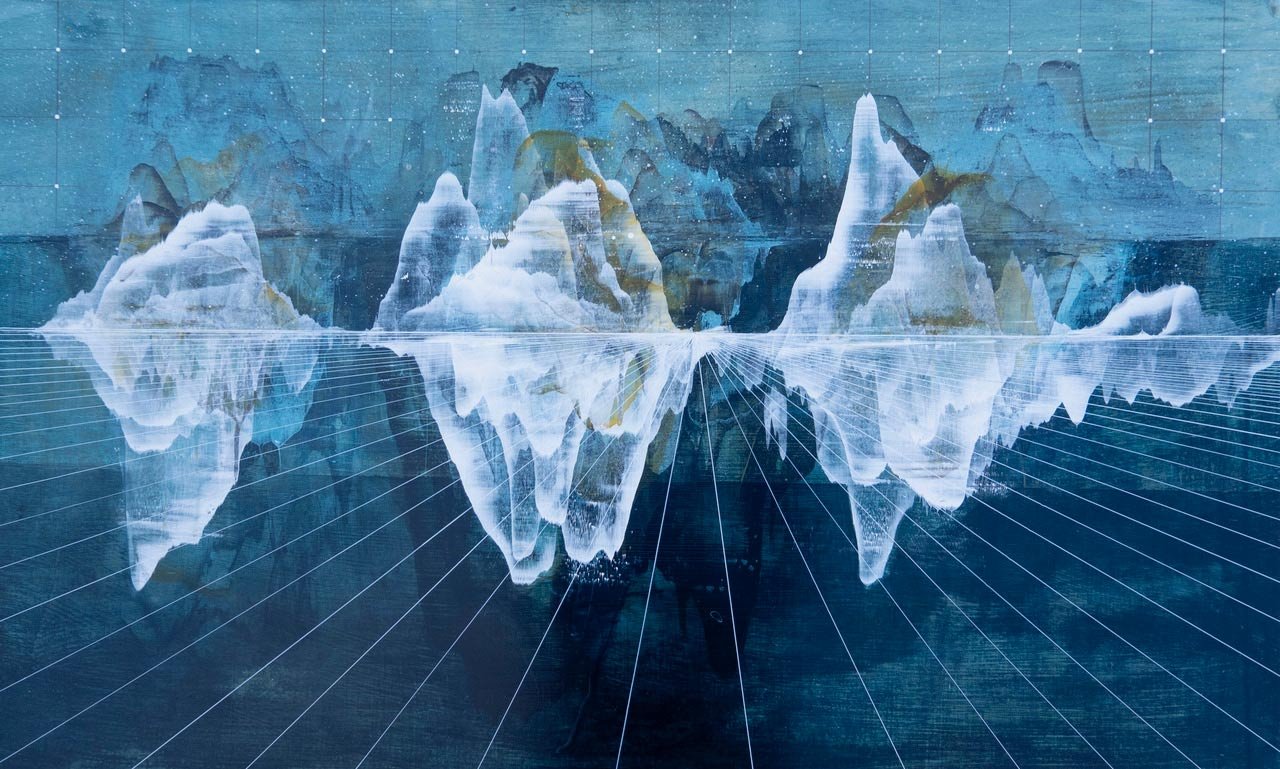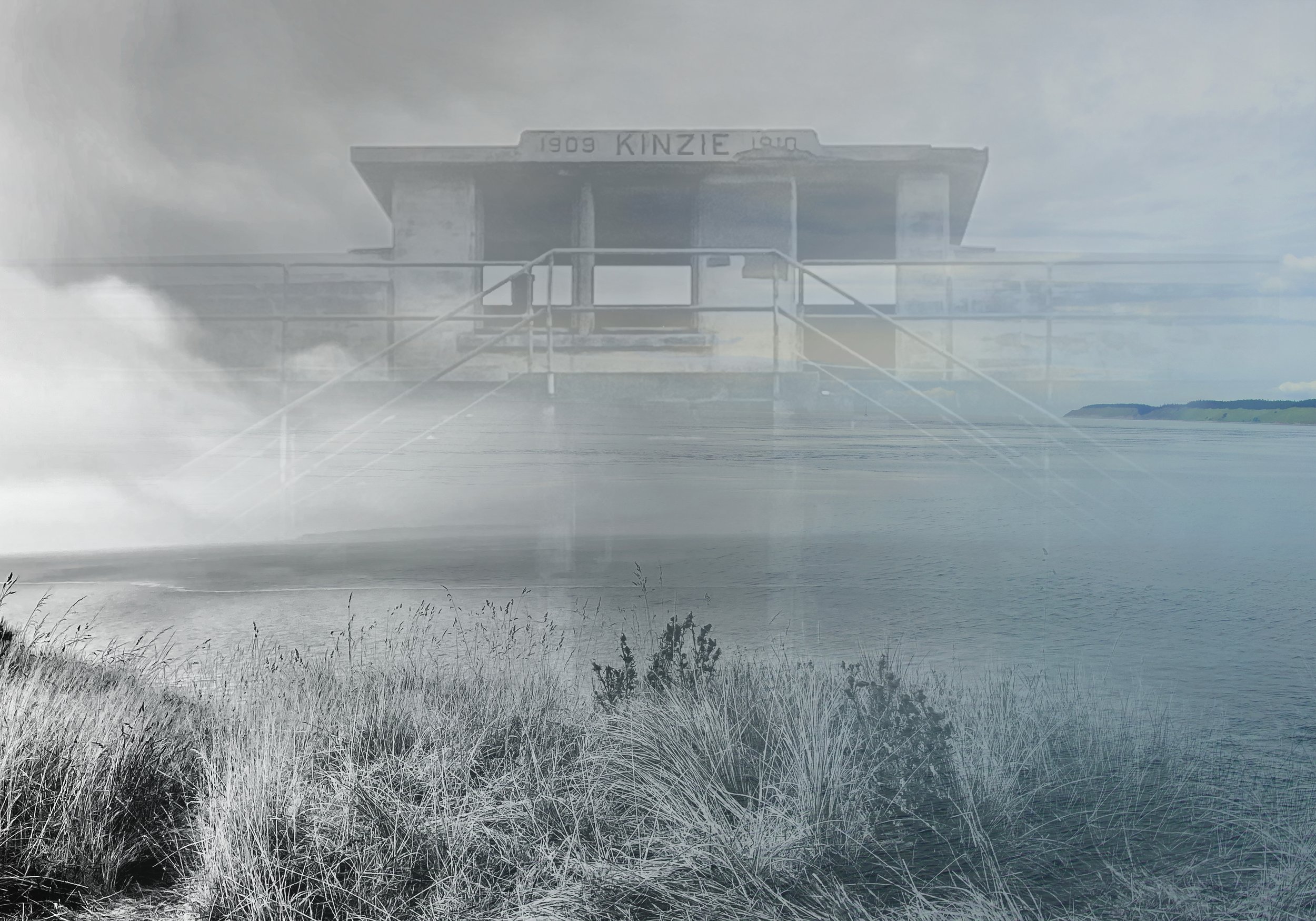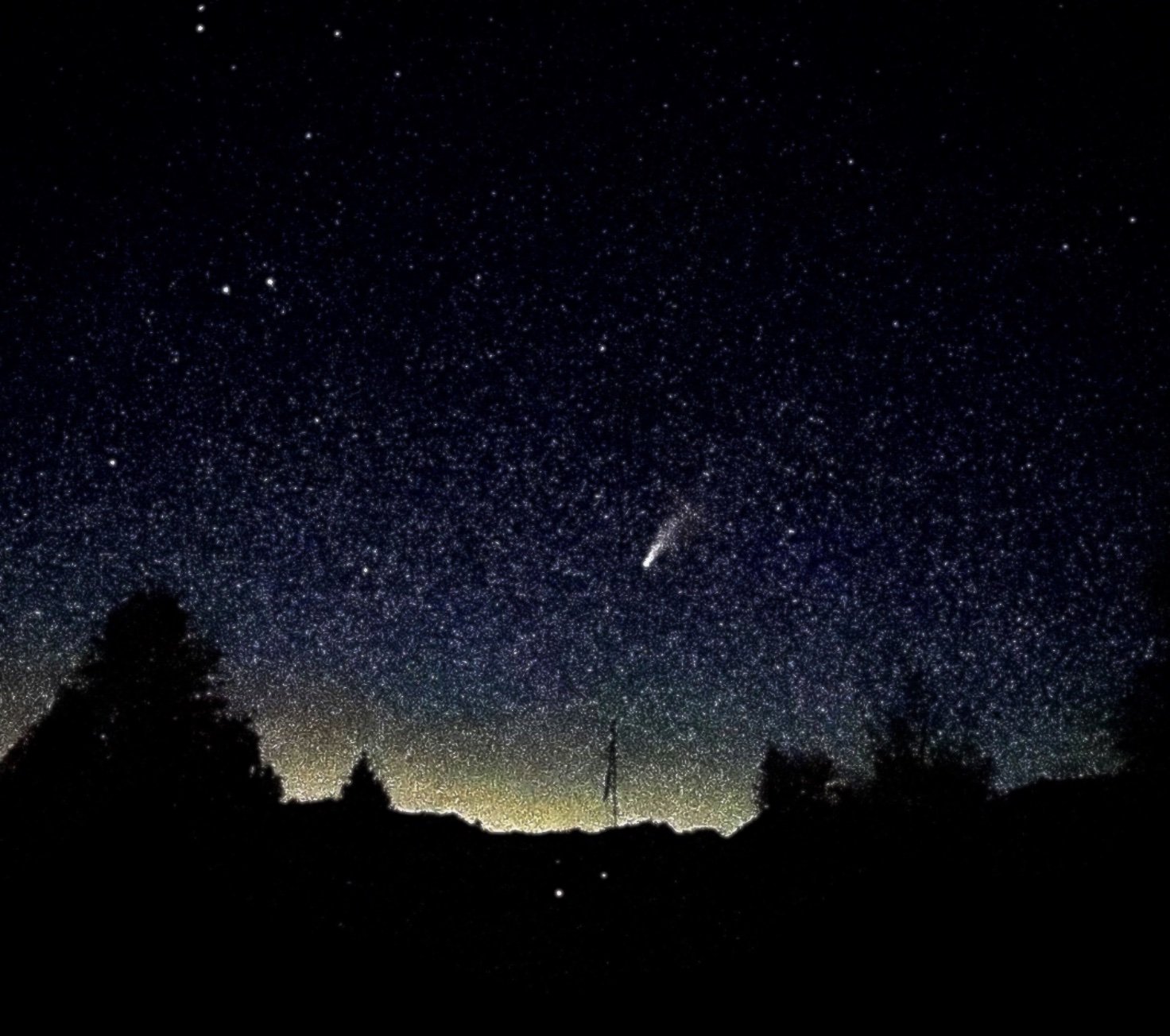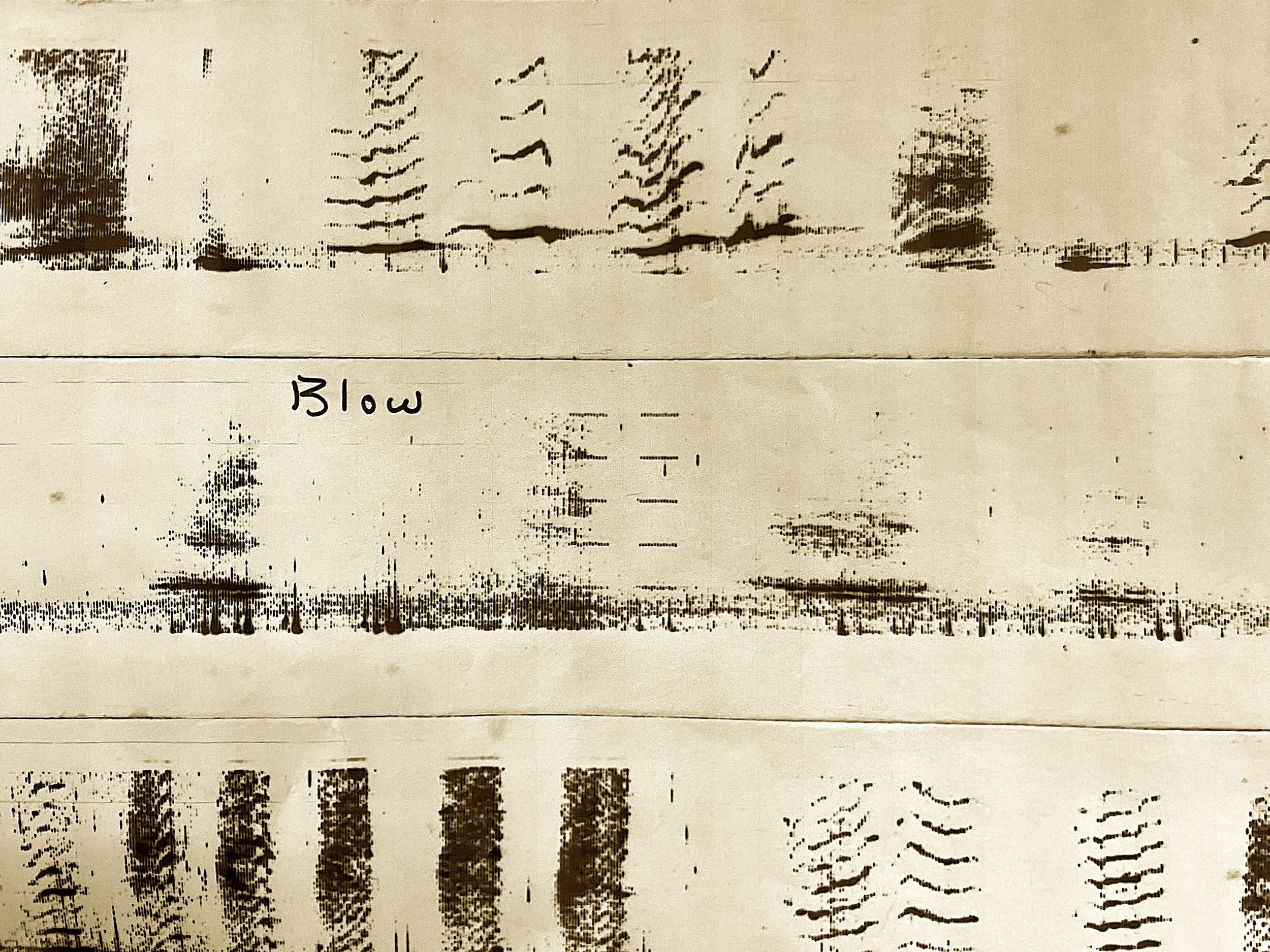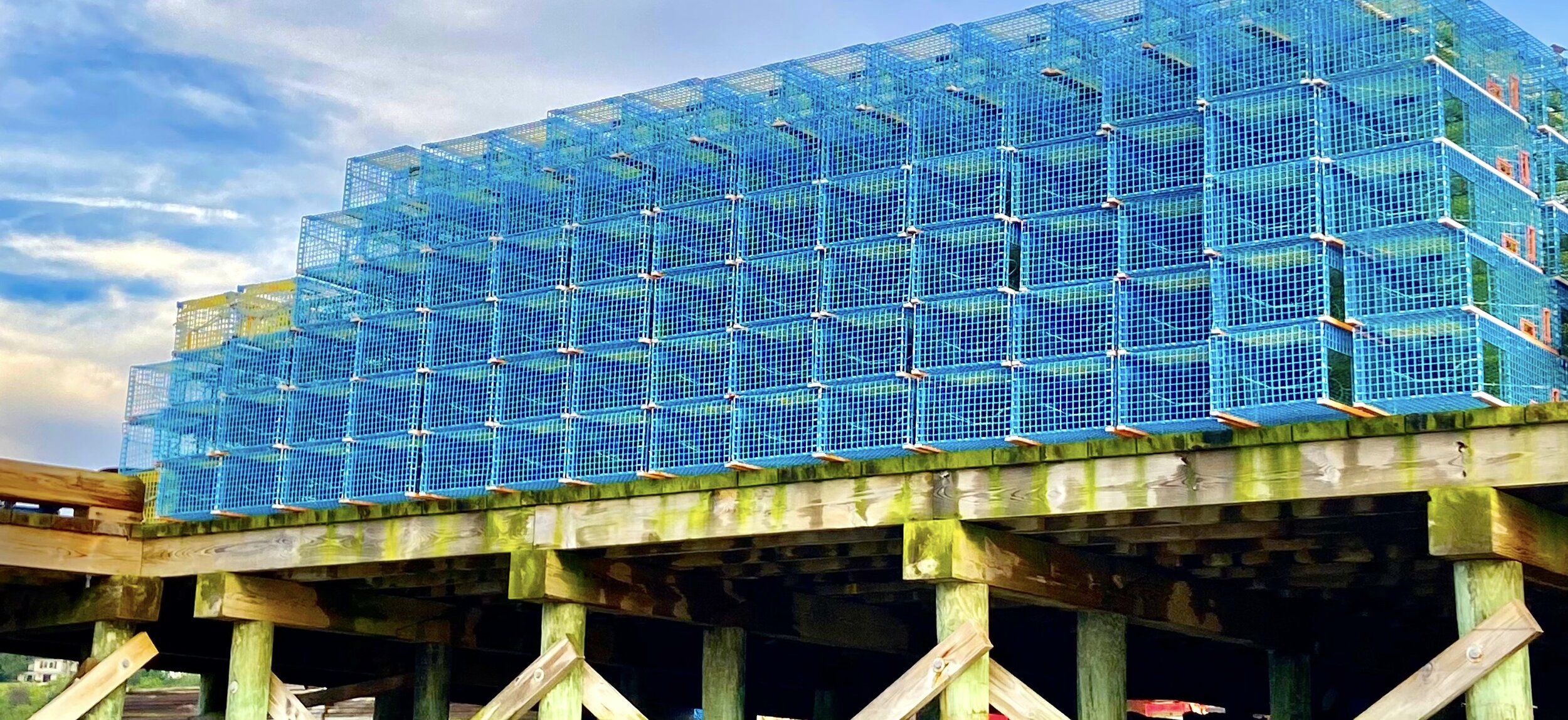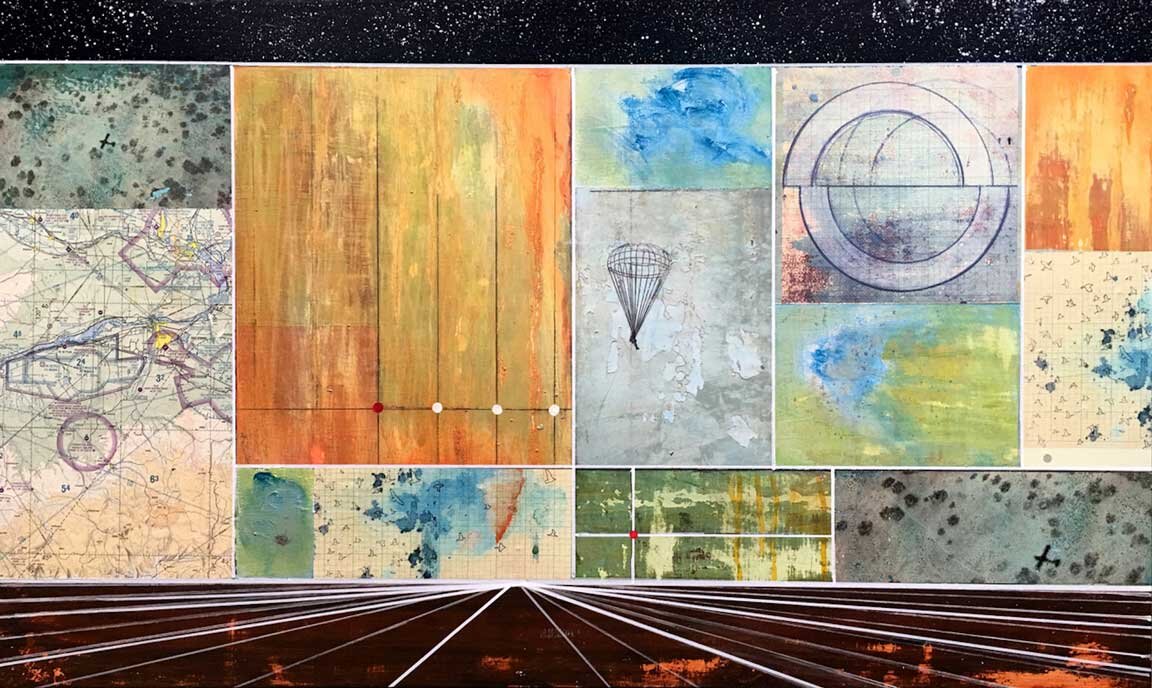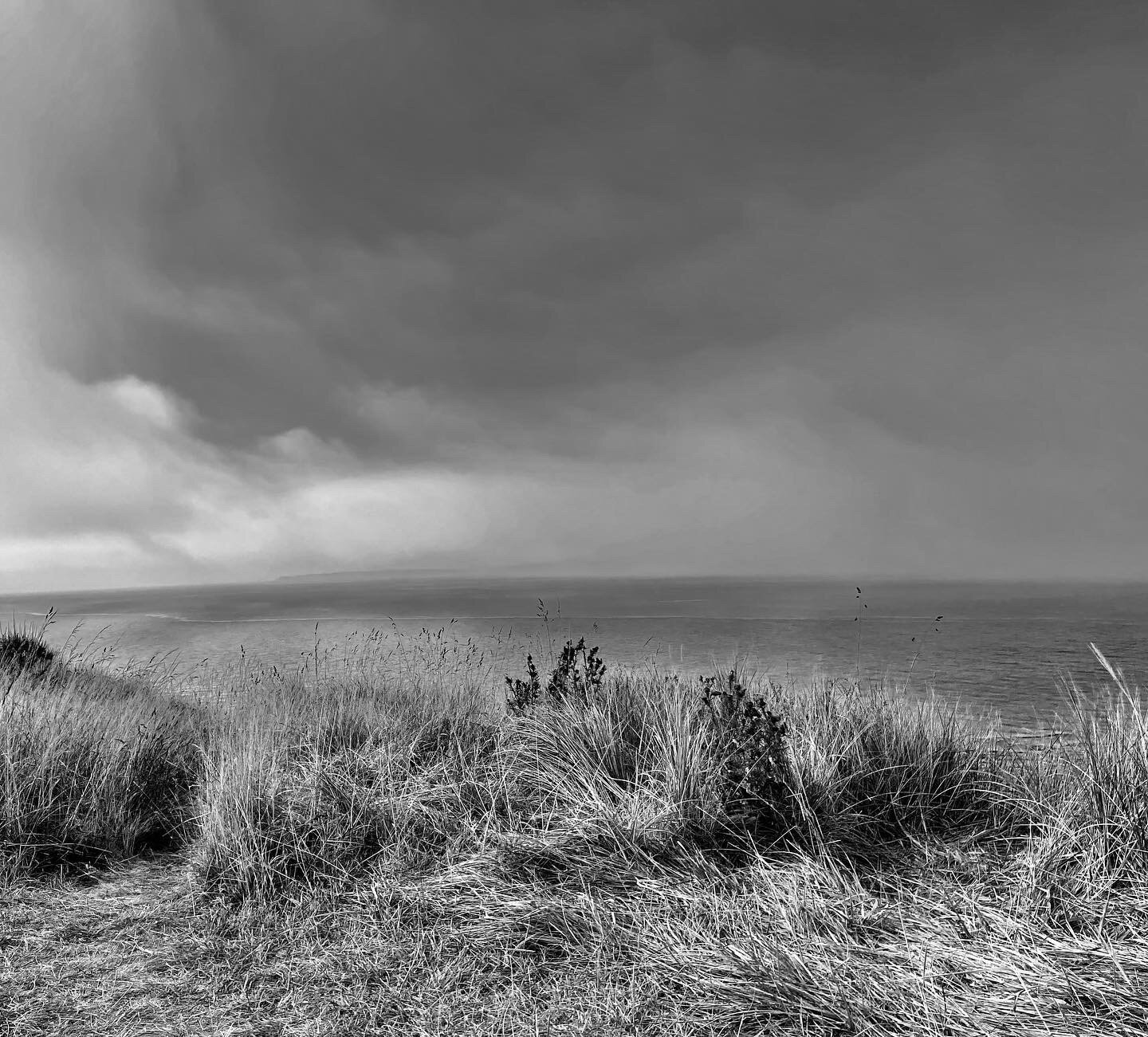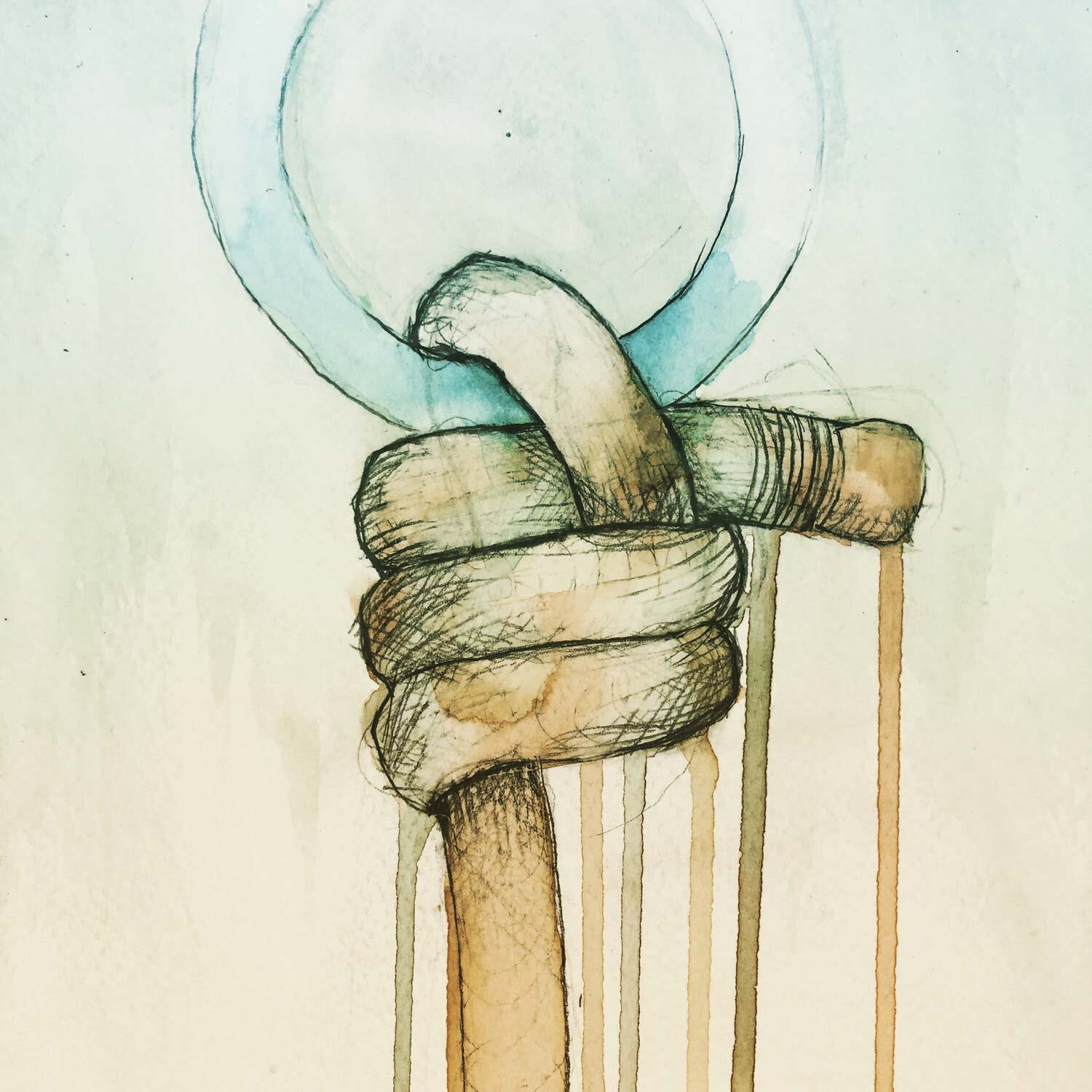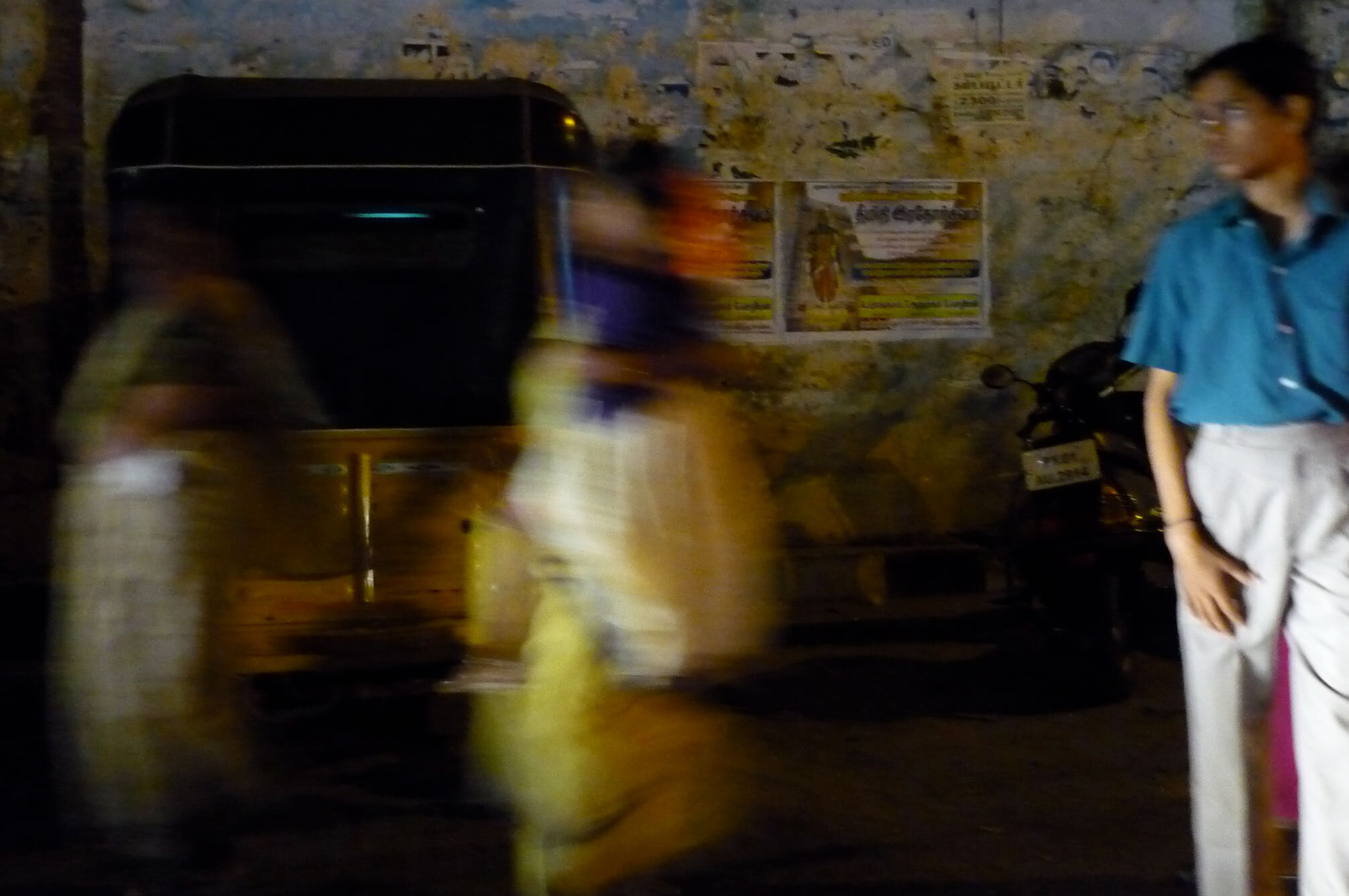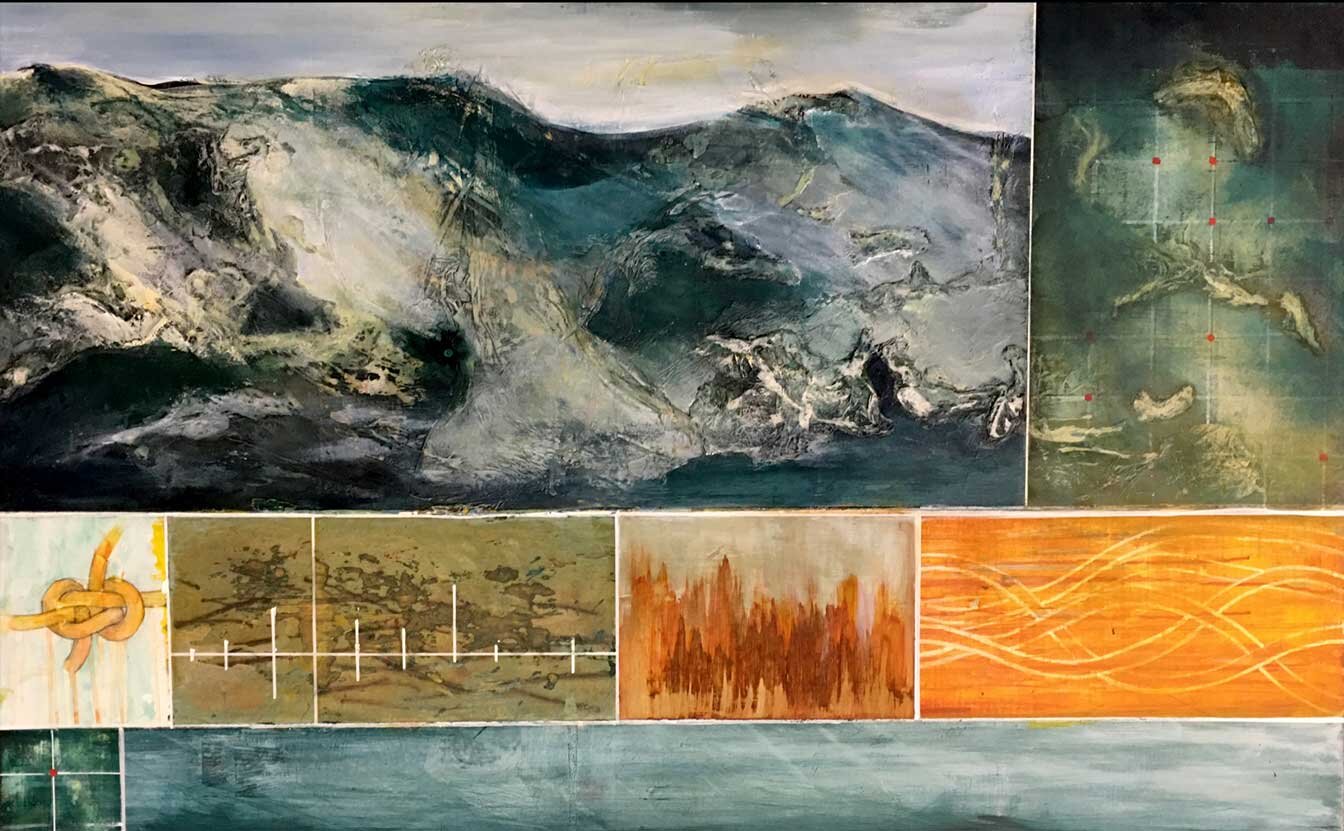What a dream it's been to be in McCarthy, Alaska, at the Wrangell Mountains Center. After four days of scouting around and listening, I broke out the microphones yesterday and was delighted by the sounds of this incredible place - The sublime splash of glacial moraine melting free, the almost imperceptible groans and creaks of shifting glaciers, and the gentle lapping and trickling of those stunning, impossibly blue meltwaterlakes. I’m soaking it all in, and here’s a sample.
Underwater Baseball
Overheard underwater in Quartermaster Harbor, Vashon Island, USA
CANA/ACA Soundscape Field Station Residency - Week 01
A written summary of Week #1 at the Canaveral National Seashore/Atlantic Center for the Arts Soundscape Field Station, by Artists-in-Residence, Gordon Hempton and Perri Lynch Howard.
Some Kind of Nature
Frequencies: To Carry On Dreaming | 2023 | Mixed Media on Panel | 24”H x 36”W
The “Frequencies” series explores the passage of light, sound, and signal through landscapes on the front lines of climate change — a phenomenology of place. The sounds you hear were recorded from the west coast of Svalbard in the Arctic Circle during October, 2022, 77.8750° N, 20.9752° E . To access more of my sound installations and visual works, please visit www.perrilynchhoward.com or on instagram, @velocitymadegood.
HEAR THIS
The works shown here, with sound, are informed by landscapes that are subject to fire, freezing, drought, or flooding, and showing the effects of a changing climate.
The paintings are graphite and acrylic on panel. I sampled the field recordings from the Arctic to the Amazon and interpreted the sounds visually - A phenomenology of place.
Svalbard Speaks
Perri Lynch Howard is an artist forging new narratives from the front lines of climate change.
Her recent artworks investigate the impact of marine noise pollution on whales and other mammals in the Arctic Circle.
She will share images and sound from her expedition above the 78th parallel - sailing the coast of Svalbard on a barquentine tall ship, with an international group of artists, scientists, and journalists through The Arctic Circle Residency Program.
Perri will provide an early preview of works-in-progress inspired by the journey, and illustrate how we can harness the power of art to inspire new narratives in a changing climate.
Light's Flight
ON OUR WATCH
Sound Installation at Jack Straw New Media Gallery, Seattle, WA
PRESS RELEASE - CLICK HERE
Exhibition Dates: Friday, July 15 to Friday, August 12, 2022
Opening Reception: Friday, July 15, 7-8:30pm
Youth and Family Workshop (accessible for visually impaired): July 23, 2-4p, 2022
To attend the reception, a workshop or to schedule a visit, email:
jsp@jackstraw.org or call 206-634-0919 / 4261 Roosevelt Way NE, Seattle, WA 98105
Once vibrant fortresses protecting the harbors, ports, and cities of Puget Sound, Fort Worden, Fort Casey, and Fort Flagler are now on the front lines of climate change, but were never designed to face this sort of surge. How will the bluffs, bunkers, and batteries weather the storms? The winds? The tides? This artwork offers a contemporary perspective on these emplacements that share a military past, transitional present, and tenuous future in a changing climate.
During an artist residency in 2021 at Centrum located in Port Townsend, I conducted interviews and documented the three forts with photography, video and sound recordings. Through this process, I became fascinated with the sonic signature and deep resonance of the batteries, control towers and other emplacements. The Puget Sound Coast Artillery Museum provided access to the archives to the United States Coastal Defense System. I learned that there was no audio archive for these sites, and became inspired to combine sound and story to create a sense of place. The overlay of the recordings while standing in the visual presence of decaying embattlements leaves visitors with many emotions to reconcile.
I hope that audiences will derive a sense of place from this installation, be inspired to visit the forts, and take a vested interest in the complex history and unknown future of these beloved destinations.
This exhibition has been generously supported by The Centrum Foundation, The McMillen Foundation, Willapa Bay AiR, The Coast Defense Study Group, The Jefferson County Historical Society, The Puget Sound Coast Artillery Museum, Jack Straw Cultural Center, Artist Trust, MadArt, and a Working Washington Grant.
The artist gratefully acknowledges the contributions of narrators, Sarah Berns, Grace Butler, Sarah Gilman, Joshua Porter, and Christopher Solomon. Heartfelt thanks to Craig Howard for countless edits. This work would not have been possible without guidance and support from Joel Maddox, Levi Fuller, and the production team at Jack Straw Cultural Center. Thank you for the opportunity to share “On Our Watch” with Seattle audiences.
Where were you when? →
The comet, Neowise, as seen from the back porch.
In October, 2021, I had the opportunity to perform in a reader’s theatre production at The Merc Playhouse in Twisp, WA. The show was titled “Coronanthology: The Year We Held Our Breath,” directed by Phil Quevillion. The production featured original poetry, prose, essays, and songs written by community members in response to the pandemic. My piece is titled “Where Were You When?” It’s about how the comet, Neowise came rocketing into my life, during the darkest of times.
Once Upon A Whale Song
Plans are afoot for an exhibition next year at the world headquarters of Ocean Alliance in Gloucester, MA. We are joining forces to develop artwork and narratives that convey the devastating impacts of human-generated noise pollution on whales and marine life in the world’s oceans. We are currently seeking funding for the exhibition. Click below to learn more or request the prospectus via email.
Songs and Stories from Rocky Neck
Lobster Traps, Marine Railway Yard
Here on Rocky Neck for two weeks now. The work feels multi-directional, if not totally scattered. On one studio wall are the knots, to the right of the knots are the powdered graphite drawings. Over by the kitchen, the impulse purchase of three antique charts hang crookedly from a pair of silver bull clips.
The computer holds the weighty gigabites of sound and image from the Paint Factory, rocky shores, boatyards and beaches.
My daily routine is a cross-fade between these bodies of work, wondering if they will ever knit themselves together like the acres of nets spooled to the stern of the hauled-out trawler in the boatyard next door.
It's Not A Circle, It's A Spiral
photo by Perri Howard
I'm standing on a salty shore of wet sand and lava rock, looking across a landscape that superficially presents as a beach, but reveals itself to be briny mudflat. Crystalline salt formations bedazzle the surface of a matte grey expanse. This is the northern extent of Great Salt Lake, where the water runs red, and salty waves lap against a pepper shore.
A Place to Land
OUTLOOK - 2017
I don't remember when I first saw him. If I were pressed to put a date on it, it was the autumn of 2008 and I was in Connecticut on an artist residency. He just floated into the painting unannounced, drifting laterally, from the left edge, slowly sinking down towards the bottom of the picture plane.
The Montello Diaries: Texture & Timbre
Sunset from the porch of the Montello Foundation w/Rudder.
For three solitary weeks in October, I explored the texture and timbre of the Great Basin in Nevada and Utah - walking fencelines, dropping hydrophones in livestock troughs, listening to Junipers, and burying geophones in the Bonneville Flats. This three-week envelope of time was wrapped around a two-week residency, off the grid, at the Montello Foundation.
The Triangle of Fire: Watching and Waiting
The Harbor Defenses of Puget Sound - aka the "The Triangle of Fire" - was built to protect Seattle and Bremerton during WW| and WW||. Almost immediately upon completion, these heavy artillery land-based installments were rendered obsolete by the invention of battleships and airborne combat. Once the pinnacle of military technology, the “Triangle of Fire” and all associated emplacements have since been turned out to pasture as bucolic state parks.
Complications of Cordage
You can’t call yourself a sailor if you can’t tie knots. This was the first lesson of junior sailing, just before I started racing, frightened of everything and proficient at nothing. It became suddenly very clear that knots were the real sets of keys to the boats, knots unlocked the water, knots were the ignition. Knots were the unspoken language of those who went to sea, and I wanted to speak that language so badly.
In South India, nothing was ordinary
In South India, nothing was ordinary.
The crushing delight of sights sound and smells. Latent little threats, real and imagined, routinely destabilized my self-determined trajectories. Everything was an adventure, whether I was up for it or not.These adventures were laced with quickening. "How do I survive in India on a motorbike?" I asked the watchman at the ashram. “When you being each day, just imagine yourself safely home, that evening, madam,” he replied. I turned the key, gunned the engine, and poured myself into the mad weave of cows, carts, auto rickshaws, goats, and busses.
The map is not the territory
The map is not the territory.
I love maps because they make me feel omniscient. With a map widespread, I can look directly at Texas and catch Rhode Island out of the corner of my eye.
Maps are designed to be folded. Collapse the Badlands and Minneapolis becomes an outlying suburb of Spokane. I have a friend who grew up in the crease between Boise and Pendleton.
As a six year old, maps held great potential. If I folded the Eastern Seaboard of the United States three times, I could bring my family all back together again. Marblehead, Boston, and Rumson, New Jersey; their major and minor city stars aligned in a perfect constellation. Star upon star upon star, I could hold us all in one tiny hand, or wished it to could be so.
“Weatherbound” opens at SAM Gallery Taste space
“Weatherbound” has just opened at the SAM Gallery Taste space. This series is a small part of a larger body of new works that began in New Brunswick, Canada, during the Kingsbrae International Residency for the Arts and continues to evolve and expand in my home studio here at Twispworks. Multiple sources of inspiration conspired to inform these paintings.

